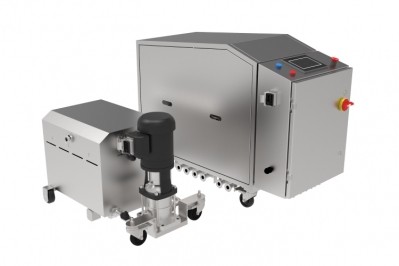Things to consider when creating new yogurt recipes

This is according to Pranav Shah, process category director for fresh and fermented dairy at global processing equipment and solutions provider SPX FLOW, who said when crafting new recipes or upgrading old ones, there are three things companies need to consider about their equipment.
The first is where raw materials are mixed and standardized. Shah said no matter what type of yogurt dairies are making – standard, high-protein, skyr or Greek – they must select the right line size and type of mixer to give optimum efficiency.
Installing cavitators can increase the yield of additives, such as stabilizers, and they can reduce the time needed for hydration. There are different sizes of cavitator, with varying rotations per minute, which can be chosen to achieve the desired results, he said.
“The second is pasteurization, deaeration and homogenization. Pasteurization ensures that controlled denaturation of whey proteins happens along with the necessary bacteria kill,” Shah said.
“Selecting the right size and type of pasteurizer is key. The smart automation can reduce the utility costs as well as gives more uptime. When the plant is not used for a short time, hibernation of equipment is more suitable than shutting down and restarting the pasteurizer. Fully traceable flow diversion mechanism in case pasteurization is not achieved is also a very important feature.”
Shah said homogenizers disperse fat uniformly while offering a richer taste. The piston cooling water can be recirculated in a hygienic set-up, so dairies do not lose cooling water and can conserve it fully. A microgap homogenization valve is a feature that gives the benefit of high homogenization efficiency at lower power consumption. Deaerators remove the air and reduce fermentation time, and also take away undesirable volatile odors.
The third consideration is incubation and fermentation. Shah said incubation guards against cross-contamination by using a dosing vat system (DSV). The DSV comes with a HEPA filter, which creates positive pressure around the dosing vessel.
“So while dosing culture in the DSV, environmental air is pushed out and only HEPA filtered air is allowed in the surroundings. This will prevent any contamination entering the product from surrounding air. The DSV is a completely closed system. The design is CIPable and SIPable. There is full traceability of dosing of culture, time, amount, frequency etc.,” Shah said.
The fermentation tanks are also designed with required features like an emptying angle at the bottom, sampling valves in the right place, safety valves, required instrumentation etc. The most important aspect of tank design, Shah said, is selection of the right agitator. The agitator is selected based on its required function: The mixing and agitation needs to be done without affecting texture of the product. The cooler installed in the downstream needs also to be selected with low pressure drop, a gentle temperature difference between media and product and less contact points. Before the product gets packed, dairies can add smoothing devices and fruit dosing stations. Cavitators can enhance the viscosities of drinkable yogurts, Shah said. To ensure minimum losses, he said pigging systems are recommended to save on product loss, increase up-time and reduce Clean-in-Place (CIP) cycles.
Working with relevant stakeholders starting from innovation centers, leading consultants from industry, partner companies that handle bacteria culture, ingredients, packaging and utilities is the key to deliver wholesome products with the right texture, flavor and highest quality, Shah concluded.





